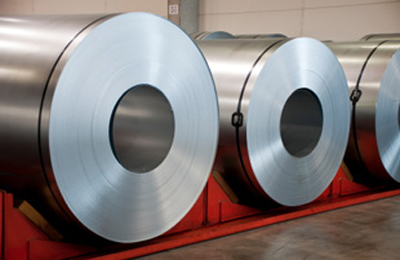
All quiet in the tin market - too quiet?
London, June 6, 2014
The London tin market is quiet. Too quiet.
On the London Metal Exchange (LME) three-month metal has done no more than shuffle sideways around a core $23,000-23,500 per tonne range since the start of May.
After flaring wider in April and early May, front-month spreads are becalmed, the benchmark cash-to-three-months period ending Monday valued at a relatively benign $13-per tonne backwardation.
Market open interest has been steadily draining away and last week touched levels not seen since 2012.
It is a market, to quote Leon Westgate, analyst at Standard Bank London, that appears to be sleep-walking. ("Commodities Daily: the forgotten metals - lead and tin," May 30, 2014)
Yet it is also a market that remains in a state of structural supply shortfall with Indonesia, the world's largest exporter of the soldering metal, still keeping a vice-like grip on overseas shipments.
Which begs the question; is tin sleep-walking into a potential fire-storm?
ALL QUIET ON THE WESTERN FRONT
At a surface level, the LME market has behaved in text-book fashion.
The sharp tightening of the forward curve a few weeks ago, when the cash-to-three-months spread widened to $150 backwardation, has sucked physical liquidity back into the London market.
LME stocks have risen by 1,190 tonnes over the last two weeks and are now up by the same amount on the start of the year.
The ratio of cancelled tonnage, meaning metal that has been earmarked for physical drawdown, has fallen to 33.5 percent from over 55 percent in late April.
Calm has accordingly been restored to the front part of the curve.
But where exactly has this metal arrived from? After all, this is a market, just about every analyst agrees, that has been in supply-usage deficit for at least a couple of years with the gap only expected to widen this year.
NO CHANGE ON THE EASTERN FRONT?
It certainly hasn't come from Indonesia, which last year moved to restrict the flow of metal into the world market by imposing minimum purity standards on exports and a requirement that everything leaving the country must first be traded on the domestic Indonesia Commodity and Derivatives Exchange (ICDX).
ICDX volumes have since become a good proxy for exports, albeit with some timing variables. And volumes in May dropped back again to around 5,000 tonnes from over 6,000 tonnes in April.
Moreover, the Indonesian authorities seem to have successfully stemmed a previous flow of tin solder out of the country as they mull including that form of the metal in the new rules governing exports of tin ingot.
It follows that the recent arrivals of tin in the LME warehouse system must be coming from unreported stocks.
Here the focus turns to China, the world's largest producer and consumer.
China has historically been a net importer of tin but imports have dropped sharply since the middle of last year, implying that consumers are drawing down local inventories.
At a headline level, nothing appears to be leaving either. Official export figures show just 300 tonnes of outbound shipments in the first four months of this year.
But there is a nagging suspicion that metal may be leaving in a form that is falling below the official customs radar. It wouldn't be the first time this has happened. A similar invisible flow of material snuffed out a spectacular tin price rally above $32,000 per tonne back in the first half of 2011.
Steven Briggs, analyst at BNP Paribas, estimates that surplus inventory in China was 20,000 tonnes at the end of 2013 and warns that with the arbitrage favouring exports again, "though not showing up in official Chinese data, we suspect exports have increased this year." ("Tin like a coiled spring", May 29, 2014).
A MATTER OF TIME
Briggs' bullish view is encapsulated in the title of that research note.
But he is not alone in expecting another year of supply shortfall. The constraints on existing tin production are well known, as is the lack of new mine projects on the immediate horizon.
The market balance maths are compelling, particularly given signs that tin demand, which suffered badly from miniaturisation in the 2007-2012 period, is now recovering.
BNP, for example, is projecting 3 percent usage growth both this year and next.
That's hardly spectacular but combined with an almost total absence of supply growth this year, it spells increasing fundamental tension in the tin market.
That tension is being assuaged by the drawdown of unreported stocks, definitely in China and possibly elsewhere. Such destocking can by definition not continue forever, implying some sort of upside price reaction at some stage.
BNP, by the way, is sticking with its LME price targets of $25,000 "perhaps as soon as Q3 14, and $27,000/t by mid-2015, before the prospect of new mines begins to take the steam out of the market".
Of course, just as unreported stocks are currently being drawn down everywhere else, they could be rising in Indonesia itself.
Exports have averaged 5,700 tonnes per month since the new export rules kicked in last September, compared with around 8,300 tonnes per month in the prior 20-month period.
That might give bulls some pause for thought that there will be sufficient supply to damp any repeat of the super-strong 2011 rally.
Until you remember that this stockpile will be in the country that firmly believes it has the right both to determine prices and to ensure those prices are sufficiently high to generate a healthy profit for its local producers.
That, of course, was the two-pronged ambition of the export ban in the first place. - Reuters







